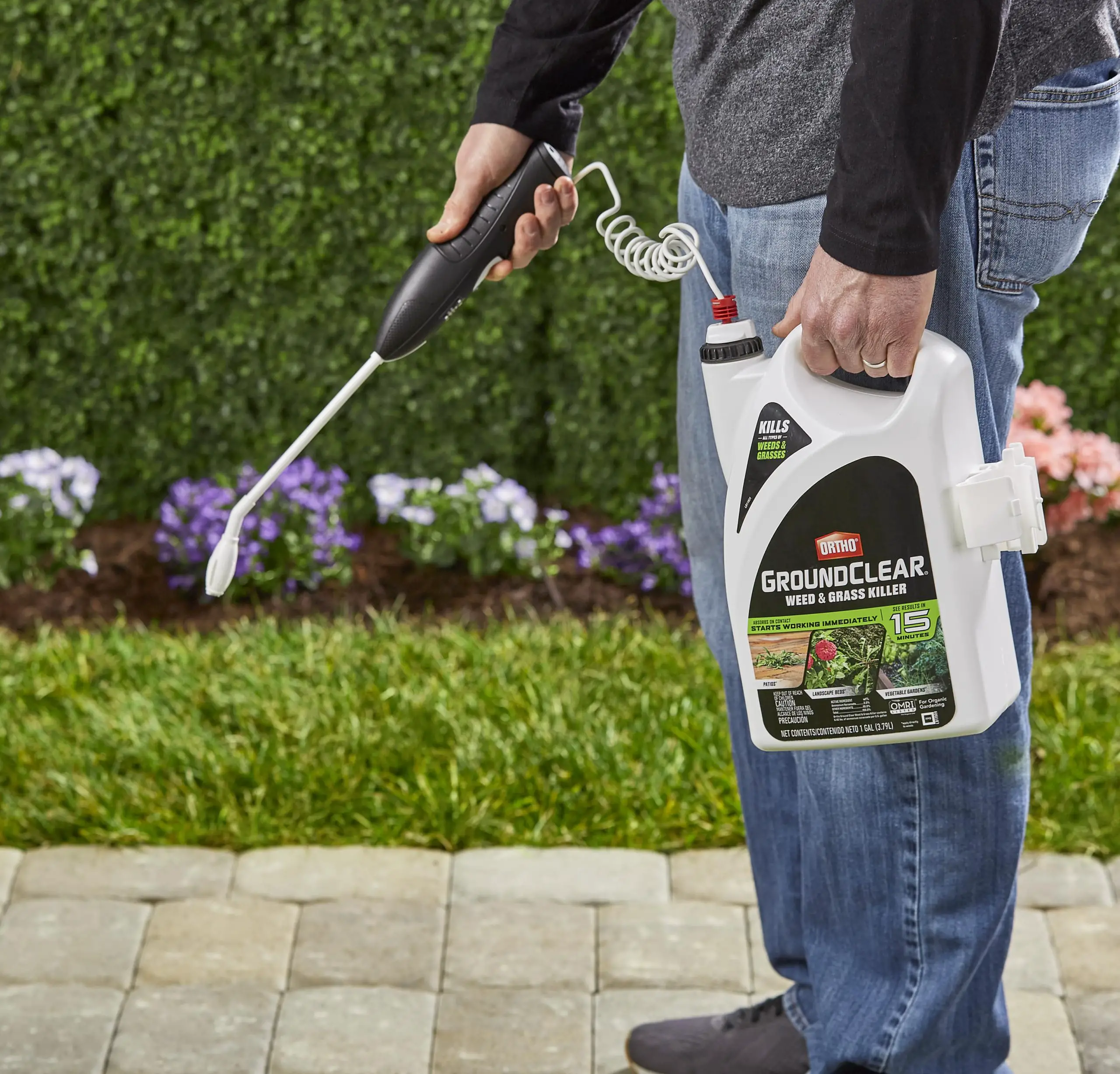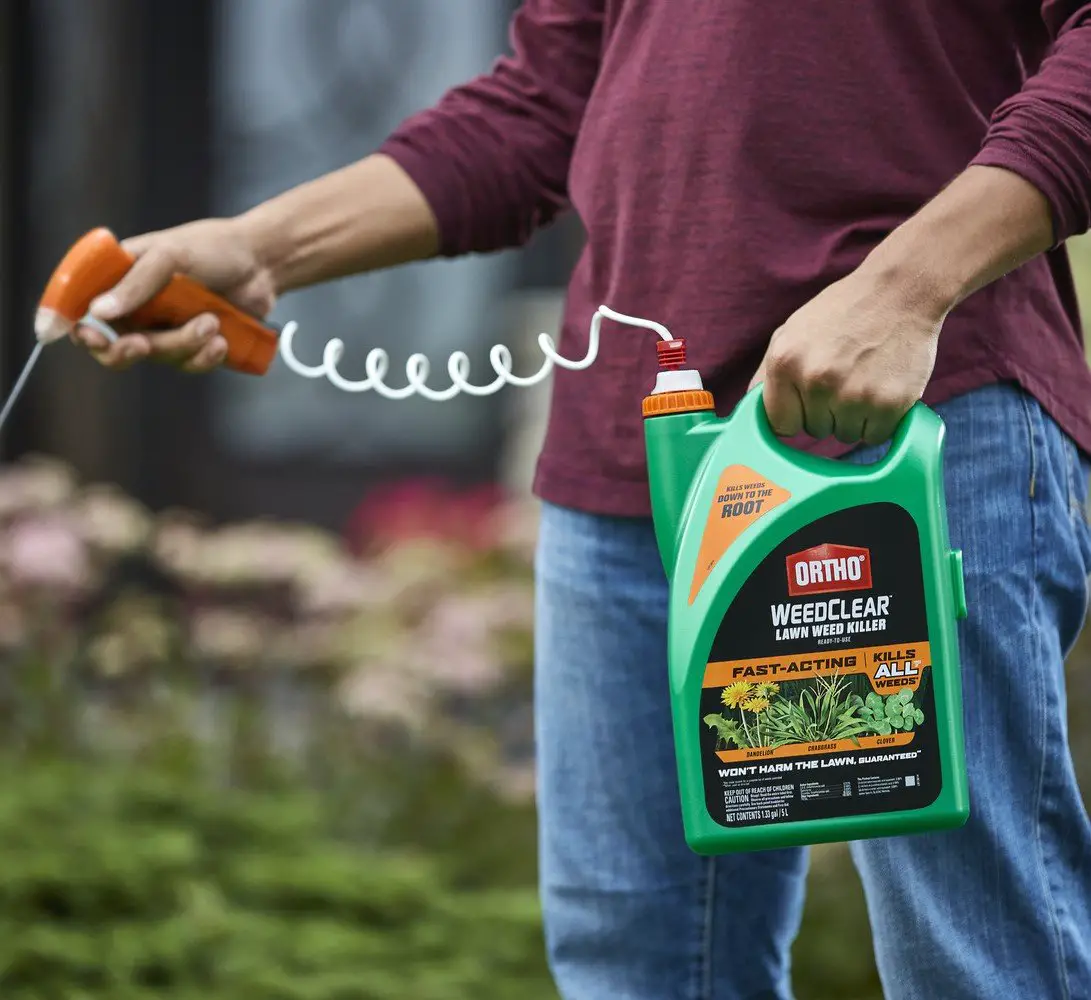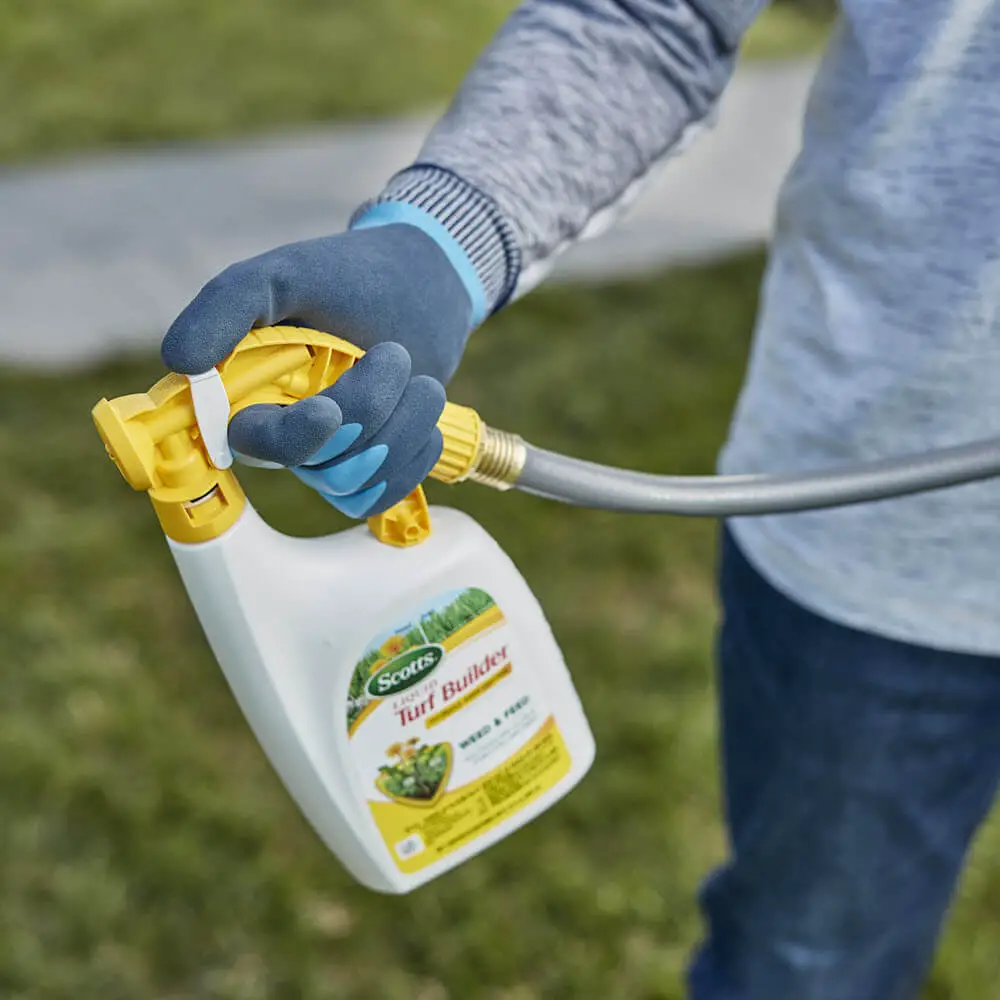Can You Use Weed Killer Before Rain Is Due
Some weed killers can be applied prior to a downpour and some can not, depending on a few different factors. If choosing a product with a rainfast aspect to it, be aware that rainfast recommendations can vary between products.
Its best to monitor your local weather forecast and apply this kind of herbicide within the suggested timeframe. Confirming the active ingredient in your herbicide choice will also help to determine the best time. Keep reading for more information on each application type.
Recommended Reading: How To Get Rid Of Mosquitoes In My Lawn
Rain And Lawn Treatments
If its going to rain the day you go to apply the weed killer, you should avoid putting down herbicides until after the rain passes and the leaves dry off. Some herbicides need up to two weeks of dry weather for best effects, so taking a look at the weather forecast can help you avoid having your weed killer treatments diluted or washed away.
How Do You Use Liquid Weed Killer
Utilize a high-quality sprayer for applying liquid weed killer. It is not recommended to use insecticides on plants that are currently under stress. After irrigating and watering for a period of three hours, apply the weed killer. In the event that the grass is in pristine condition, the treatment should be administered once every three years.
Also Check: How To Get Rid Of Weeds In Your Lawn Naturally
The Weed Control Timing Chart
Herbicides may be almost completely ineffective if applied at the wrong time of year. There is an optimum time frame to apply an herbicide to each weed. In most cases, this time is early in the weeds life cycle, but in some cases, herbicides should be applied during a different growth stage. Generally, weeds should be actively growing when an herbicide is applied. In certain instances, only a pre-emergent herbicide may provide effective control. Remembering when to apply herbicides for the many different weeds can be a challenge. The herbicide label provides definitive information concerning the turf growth stage, time of day, and weather conditions when the product may be applied, but this simple chart can help in making a plan for the timing of lawn weed control.
The Lawn Weed Control Timing Chart was developed to help remove confusion and guesswork when determining the recommended time of year to control various weeds in lawns. The chart is arranged with a list of common weeds in rows on the left, and months of the year in columns on the top of the chart. The row for each weed listed has a colored bar in the row, indicating the time frame when the weed may be most effectively controlled. Green bars indicate application time ranges for post-emergent herbicides , and goldenrod bars indicate application time ranges for pre-emergent herbicides.
You May Like: Adding Peat Moss To Lawn
How To Spray Lawn Weeds

Spraying weeds can be a highly complicated matter as there are different herbicides to treat different lawn weeds. The herbicides can slightly work or be very different, they can be tolerant or intolerant of different lawn types, and the complications can continue.
However, for most of us, if we know the weed types were dealing with we can usually purchase the appropriate herbicide for our needs and apply it with reasonable certainty when following the instructions on the packaging.
Our aim with this article is to give an overview of some of the considerations that people should be aware of when doing any type of weed spraying on their lawns.
Also Check: How To Make Money Lawn Mowing
Roundup For Lawns1 Ready To Use
- Make sure this fitsby entering your model number.
- Weed killer with an extended wand to make it easy to spot-treat lawn weeds
- Kills over 250 weeds, including crabgrass, dandelion, clover, and yellow nutsedge-won’t harm your lawn
- Lawn weed killer for use on Northern grasses, including Kentucky bluegrass, perennial ryegrass, fescue, bermudagrass, buffalograss, and zoysiagrass
- Starts working immediately and rainproof in as little as 3 hours
- For hard-to-kill summer crabgrass and grassy weeds, use Roundup for Lawns Crabgrass Destroyer
Why Do Most People Prefer Applying A Weed Killer In Late August Or Early September
Late August or September, while there is still some warmth around, is one of the gardeners favorite times for full lawn weed control. If you only need one application per year, this is the time period to consider.
Why and how to apply a weed killer in late August:
- Most weeds are already grown completely
- The spring seeds in the lawn are already germinated by this time
- Easier to kill than winter-hardened weeds in early spring
- The lawn should be fertilized before the application to improve its effect
- When there is moisture in the topsoil. Otherwise, you may harm the grass
- When it is going to rain for 6 hours
- Wet grass may dilute the weed killer, so apply only on dry grass
- It is recommended to apply only in calm weather. Otherwise, wind may blow the substance away
- Do not spread the weed killer in freezing conditions
- Avoid extreme heat and strong sunshine
- During the late summer, it is better to use a weed killer in the cooler evenings
- Consider applying a weed killer after mowing. You should wait for 2 days if you intend to apply a liquid herbicide. After the application, do not mow for the next 3 days
Also Check: Does Meijer Sell Lawn Mowers
Our Services Are Guaranteed
If you are not completely satisfied with an All American Turf Beauty application to your lawn, we will re-apply the application at no additional cost and continue the regular lawn treatment program. Alternately, we will fully refund your cost for the application and cancel any further obligation on your part.
To qualify for the guarantee, you must call All American Turf Beauty within 30 days of application.
Can You Spray Weed Killer On Wet Grass
Come spring or fall, theres much to do to keep our beautiful lawns and garden borders looking great and in healthy condition. Twice each year, you can always catch a gardener or landscaper whistling along through this green space or that with either a bag of seed or an herbicide sprayer in hand. Ironically though, reseeding and de-weeding should be done around the same time that dark clouds, full of precipitation, begin to loom above. But as the old adage goes, you cant control the weather.
So, how do we accomplish what we need to? When each morning, were greeted with either a heavy layer of dew on our lawns or saturated soil from the previous nights downpour. We know we can throw seeds down, regardless. But, can you spray weed killer on wet grass? And if so, how effective is it?
Also Check: Who Has The Cheapest Riding Lawn Mowers
Why Should You Use Organic Weed Killers
Organic weed killers are a safer option compared to chemical weed killers that contain toxic ingredients which are harmful to both healthy plants and humans.
They are not as harsh on the nearby plants while killing different types of weeds.
They are also a good option you should consider if you have pets or children at home.
Dogs and cats tend to eat grass, and while eating grass, they can also engulf the harmful weed killers. For this reason, it is best to stay on the safer side by choosing organic weed killers over chemical herbicides.
They also do not have a pungent smell like the chemical weed killers.
It is because they are mostly made up of essential oils, which have a lovely fragrance. So, you will not have to tolerate a bad smell for days while using organic weed killers.
You will also not have to wait for several days to start using your garden again.
What Products Can Increase The Effectiveness Of Most Grass Killers
If you want to increase the effect of herbicides, apply them along with nitrogen fertilizers.
The most effective option the combinatory application of ammonium nitrate and herbicides.
Apply the required amount of 0.2-0.4% solution of ammonium nitrate several days before the treatment with a herbicide. Or spread 0.02 0.03 lbs of this fertilizer per 10 sq. ft. on the plot after the medium irrigation, a week before the application.
If weather forecasters do not promise good weather after the use of herbicides , consider adding adhesives to the mixture. In addition, their use is perhaps the only way to reduce the dose of herbicides without compromising on effectiveness. Adhesives must have a biological origin, for example, Liposam, to prevent the spread of chemicals to the soil and cultivated plants . The effectiveness of herbicides along with adhesives is dramatically increased.
Also Check: How Do I Treat Clover In My Lawn
Classes Of Weeds: Broadleaf Grassy Sedge
The first step to controlling weeds is to know your target. Weeds fall into three classes: broadleaf, grassy, and sedge.
- Broadleaf weeds produce two seed leaves as the plant emerges and generally display broader leaves and branched stems. Broadleaf weeds include white clover, dandelion, thistle, pokeweed, and poison ivy.
- Grassy weeds produce one seed leaf, like regular turfgrass. Examples include goosegrass, crabgrass, and rushes.
- Sedges also make just one seed leaf, but in cross-section, the leaves show a triangular shape, as with yellow nutsedge.
How Long Should I Wait To Apply Weed Killer After Applying

Wait until the grass sprigs have established their roots and begun to grow if you recently sprigged the lawn. When applying the weed killer, use just one-half of the rate that is indicated on the product label. Wait seven to ten days before applying the product again to treat any weeds that may have survived the initial treatment.
Also Check: Who Makes Bad Boy Zero Turn Lawn Mowers
Guidelines For Using Postemergence Herbicides
When choosing an herbicide, make sure that it will control the weed and that it is recommended for your turf. Before using, read the entire label and follow it precisely for rate and timing. The following tips will help you achieve optimum control.
- Most broadleaf weeds are best treated in the spring or fall when air temperatures are between 65 and 85 degrees F. During hotter temperatures, turf damage is more likely to occur.
- At the time of treatment, soil moisture should be adequate. When stressed by drought, weed control is poor and turf damage may occur.
- Do not mow immediately prior to or after application. Mowing lessens the amount of surface area that the herbicide contacts.
- With spray applications, treat weeds when no rain is expected for at least 24 hours.
- Avoid treating on windy days because herbicide spray drift can injure ornamental plants.
- Best results occur when weeds are young.
- For acceptable control, repeat applications, 10 to 14 days apart, may be required.
Also Check: How To Kill Wild Violet Weeds In Lawn
Avoid Treatment Of Broadleaf Weeds While Conditions Are Extremely Dry
Some of the broad-leaf weeds youll find on your lawns include- but not limited to:
Other broad-leafs weeds invade your gardens and have very fast-spreading mechanisms.
To keep their spread under control, you have two options:
- One is the spraying of a broad-leaf organic weed-killing herbicide.
- Second, the use of granular weed feed products.
Pro- Tip on timing:
Apply the granular feeds early on a morning with plenty of dew on the grass. In case you choose to use organic herbicides, look out for a day that is both warm and sunny.
Your best time for the application of either granular of sprays matters, and it best coincides with the optimal conditions for the chemicals eliminating the weeds to take effect.
For instance, granules work well with wet-dewy leaves. They require water for them to stick on the leaves of the weeds. So, when the grass is dry, and you proceed to apply them, you waste on the chemicals, and both time and money.
Regarding the warm sunny conditions for the spray-weed killers, the high temperatures provide optimum conditions for the absorption of the chemicals into the cells of the weeds.
The other tricky way around it is to water the lawn before applying the chemicals if you are on long-dry summers.
Here are some good broad leaf herbicides:
| # |
|---|
| See Price |
Also Check: How To Advertise My Lawn Mowing Business
Know The Enemy And The Surroundings
The first step in identifying a product or practice to kill the trespasser is to name the weed. What weed are you fighting? Learn how to identify the weeds growing in your garden.
Weed killing products are weed-specific. A product that kills one weed might not phase another. Also, take a look at what is growing nearby. In general, weed killers are not appropriate for use on or near plants that are to be eaten. Some weed killers, including weed and feed, may drift in the breeze and kill nearby plants that are germinating.
Gently Rake In The Grass Seed
Raking is important as it helps the seeds come into contact with the soil to germinate properly. If you used a spreader or simply broadcast the seeds with your hand, the grass seed isnt in proper contact with the soil.
Lightly rake in the seed over the overseeded area to improve contact and promote faster germination. Raking will also prevent water from washing away seeds in your lawn when you irrigate.
You May Like: When Should I Put Fertilizer On My Lawn
You May Like: What Is The Best Lawn Aerator To Buy
When To Apply Fertilizer And Weed Killer
All those lush and green lawns do need a little help with the use of fertilizers and weed control products. Treat Those Weeds FirstIf you want to improve your lawns appearance, then you will need a weed control product and fertilizer. If there are still weeds poking through after a herbicide application, you might want to choose a glyphosate product to prevent further weeds in your yard. When to Apply Grass FertilizationOnce you have sprayed the weeds with a herbicide, it is time to add fertilizer to your yard. If you dont want to deal with the hassles of weed control and fertilization, you should hire a professional crew. .
When To Apply Weed Control
When to Apply Weed Control
Product packages usually provide a general guide to application timing. For example, they’ll tell you approximately when you need to apply a crabgrass preventer. When the blossoms start to drop to the ground, it’s time to put down the crabgrass preventer. If you are dealing with cool season weeds, such as henbit or chickweed, then apply a garden weed preventer as soon as soil can be worked in spring.
Resist the urge to apply too soon weed preventers have a limited life span in soil, and the sooner you apply them, the sooner they wear out. .
You May Like: What Is The Best Lawn Weed Killer On The Market
What If You Apply Too Much Weed & Feed
The best way to avoid damaging your lawn is the flush out the weed & feed. Water your lawn with 1 to 2 inches of water for about 4 days. Dont apply any other weed & feed until the following year.
Unfortunately, over watering like this can create run-off in certain drainage situations, so try to avoid the situation in the first place.
Recommended Reading: Smallest Cub Cadet Riding Mower
Yard And Garden: Timing And Applying Broadleaf Lawn Herbicides

AMES, Iowa The air has a bit of a chill in it in the mornings. Fall is almost here, which means its time to think about preparing lawns with weed control. Fall is an excellent time to apply broadleaf herbicides for perennial broadleaf control, but take care to do it properly and effectively.
Iowa State University Extension and Outreach horticulturists can help answer questions about the right time and methods to apply broadleaf herbicides.
Read Also: Kill Weeds In Lawn Naturally
Read Also: When To Fertilize Lawn In Michigan
Selecting The Correct Weed Killer
Wondering what happened to the good old stuff that used to work for your Dad?
The chemical industry is continually introducing new garden products. They regularly remove old products, often due to environmental regulations, sometimes because it is not profitable for them to incur the cost of maintaining registration on a label.
Trust the new ones, if you have been attentive with your choice.It pays to look around at the options when you are in a garden department with an extensive selection.
Double-Duty weed killer products can be an effective way to tackle multiple problems. For example, a basic herbicide is a broadleaf weed killer safe to use on most lawns, but it would not affect crabgrass. It is now possible to get the same broadleaf killer with a crabgrass killer added.This may cost more than the original single formula, but not as much as getting two separate products, and you have less labor.
Be cautious, however, about trying Neighbor Ned’s boast about mixing his own garden cocktails. Chemicals that are combined can increase phytotoxicity .
A mixture might be harmful to a plant even if both chemicals alone would not be. This is another reason why you should not increase the dosage of chemical in your spray mix.
How To Spray Lawns For Weeds Safely And Effectively
Even for the most meticulous gardener, weeds happen. Spraying lawns to kill weeds effectively and safely takes time and effort, but done right, this last-resort practice can teach you about your lawn so you dont have to make it an annual chore. Heres how to get rid of weeds.
Recommended Reading: When Should I Seed And Fertilize My Lawn